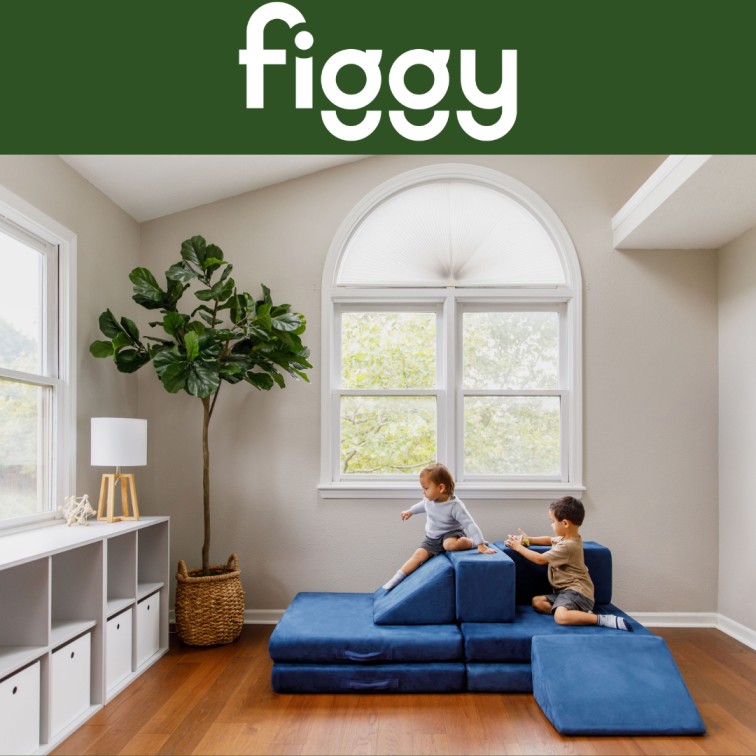Spring is just 2 days away! Hooray!! We have had the longest, coldest winter and I am hoping we are done with snow and bitter cold. We have tried to stay as active and have as much fun indoors as possible this winter and doing small crafts and activities have helped a ton. We also have gotten to experience some amazing nature right inside our kitchen for the past few weeks, this has really put us on the right track for Spring! Insect Lore is a company that specializes in insect habitats for hands-on learning the home and classroom.
Insect Lore was founded by an entomologist named Carlos White out in sunny, warm California. Using his knowledge and work with butterflies he developed an educational kit to watch the metamorphosis of real Painted Lady butterflies in a home or classroom. What began at Carlos' kitchen table in 1969 as a revolutionary idea, turned into his customers getting The Live Butterfly Garden-an educational kit with a butterfly habitat and special certificate. The certificate is a mail in to receive larvae and special food to live in the habitat. This kit was the first of its kind and has now grown to over 50 million Caterpillars/Butterflies by mail. Insect Lore is now run by Carlos's son John in California and includes both a "Bugseum" and a visitor center and his daughter Jennifer runs Insect Lore Europe in England.
Insect Lore has grown tremendously over the years and has not only the original Painted Lady Butterflies, but also Ant, Ladybug, Silkworm, Worm, and Frog kits. They also have many accessories to use with their kits as well.
We worked with Anita, who offered to send us a kit of our choice from Insect Lore. The Easter Bunny had kindly brought us the Butterfly Habitat last year, so we were interested in trying something new and exciting. They have some really fun kits and we had a hard time deciding which one looked like our best fit. Here are some that we didn't choose.

Anita was pleased with our choice and sent it right out. She also included shipping information and sent follow-up emails to let me know it was on its way.
Our Insect Lore package has arrived!
What could it be????
Our very safely packaged Ladybug Land Habitat is here!
S needed to remove the habitat immediately so she could check it all out. Included in our package was a diorama style Ladybug Land Habitat, instruction and activity guide, watering pipette, and a certificate to redeem by mail for a tube of ladybug larvae.
Watch this quick video of what we could expect with our Ladybug Land
The Ladybug Land habitat is made of domed hard plastic that is easy for viewing and durable enough for younger children to enjoy. The top of the dome has a small magnifying lid that also doubles as the way to feed and water the ladybugs. Inside the dome is a large hill area for the ladybugs to move with a water reservoir at the top of the hill, this is great to watch and observe.
Step one was getting the habitat set up in a safe yet viewable area. We chose our kitchen island because it is not in direct sunlight but can be seen everyday.
Our next step happened a few days later when we headed to our local post office and sent off our Ladybug order form.
Mailing off our Ladybug order form!
Shipping could be anywhere from 1-3 weeks for our Ladybugs to arrive, so we patiently waited and soon we had another package from Insect Lore in our mailbox.
We can see them!
Inside our newest package we found a Ladybug larvae quick guide and a plastic tube filled with little black objects (the larvae).
S is checking this out very carefully. We knew we had to open the tube shortly after opening our package so we didn't waste much time. In each tube there will be 15-20 ladybug larvae with their very own nutritious food. This is all the food that will be required for them to grow into Pink Spotted Ladybugs. Insect Lore will guarantee at least 5 larvae will mature into healthy ladybugs.
The larvae are really not anything much to look at, small black "things" that don't look anything like a ladybug.
After a quick tube viewing, we finished preparing the habitat to release the larvae into.
Step 1: Remove the magnifying lid and using the water pipette, put two drops of water onto the sponge in the reservoir. This moisture will help provide humidity to the ladybugs and will need to be moist the entire life cycle of the ladybugs.
Step 2: Using the tube filled with larvae, empty the contents into the habitat and replace the magnifying lid.
Mommy did this step to ensure that everything was done in a gentle and complete fashion.
Check out our video of the just transferred larvae
Step 3: Watch the ladybugs grow, pupate, and hatch. The guide says it will take about one week for them to enter the next stage, ours must have been a bit slow because it was almost 2 weeks of crazy growth and moving for them before they settled down and attached themselves to different spots inside the habitat. We had to make careful sure that we did not move the habitat during the time they were pupas.
Step 4: Soon enough we had some new creatures emerging and ready to go.
They still didn't look quite like ladybugs but after a few more days, they hardened and spots appeared.
Step 5: Feeding them was the next step once they had emerged from their pupas. We used some raisins we had by soaking them in water, drying them, and cutting them in half. S then dropped them in the magnifying lid hole.
These ladybugs quickly got to work on eating.
Step 6: Release the ladybugs-they can live outdoors for up to one year. We have had very few warm days and knew our ladybugs would not survive (it needs to be above 55 degrees), we kept ours in the habitat. They lived for around another 2 weeks. We really wish we could have given them more life, but with the temperature outside we knew either way they were doomed.
The kids had a blast with our Ladybug Land and so did my husband and I. I was surprised at how often Daddy would update us and say, wait until you see the ladybugs today! This was such a great way to pass a few weeks and watch nature work right in our own kitchen. The best part is we can do it again and again. Our habitat is completely reusable and after a quick wash, is ready to go again with a larvae refill.
Did you know a ladybug can fly up to 15 miles per hour? Check out all these really neat ladybug questions and answers. You will be amazed at what you learn.
Want It? Buy It!
You can find some amazing things at Insect Lore. Make sure to LIKE Insect Lore on Facebook, Follow Insect Lore on Twitter, or Repin Insect Lore on Pinterest for giveaways, photos, and fun trivia and information. You can also read up and watch a video on the Insect Lore Bugseum here. Insect Lore also has an online Outlet Sale, check it out.
Want It? Win It!
One MBP reader will win a Ladybug Land Kit from Insect Lore. Just use the Rafflecopter entry form below to enter to win. Remember- if the entry field appears in BOLD, it's mandatory.
Thanks so much to Insect Lore!
a Rafflecopter giveaway














.JPG)
.JPG)
.JPG)
.JPG)
.JPG)
.JPG)
.JPG)
.JPG)
.JPG)
.JPG)
.JPG)
.JPG)
.JPG)
.JPG)

.JPG)








































I think the butterfly kit would be the coolest :)
ReplyDeleteMarie Shaff
The live ant hill
ReplyDeleteAwesome! My little guy LOVES lady bugs. :) I didn't know there was such a thing as a moon jelly habitat. I might have to look into that.
ReplyDeleteThanks for the chance!
Fun! We just ordered some good old caterpillars...ladybugs might be next
ReplyDeleteI like the Jellyfish habitat.
ReplyDeleteButterflies are my favorite.
ReplyDeleteWe had fun with the butterflies last year. Ladybugs would be fun this year.
ReplyDelete